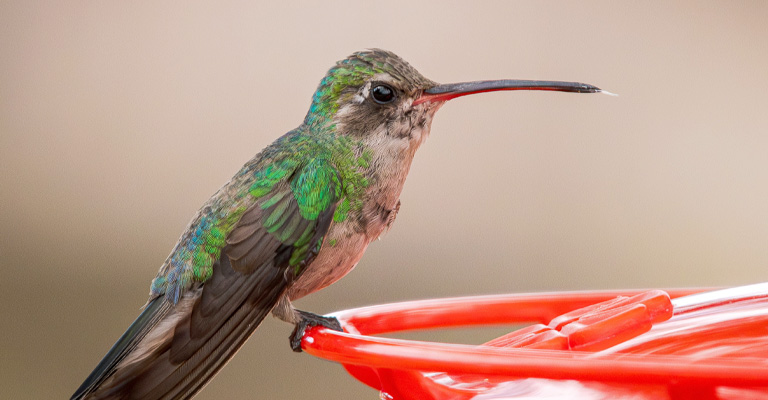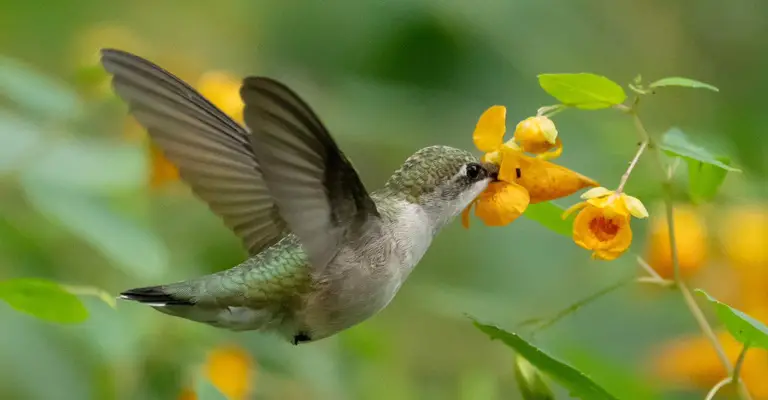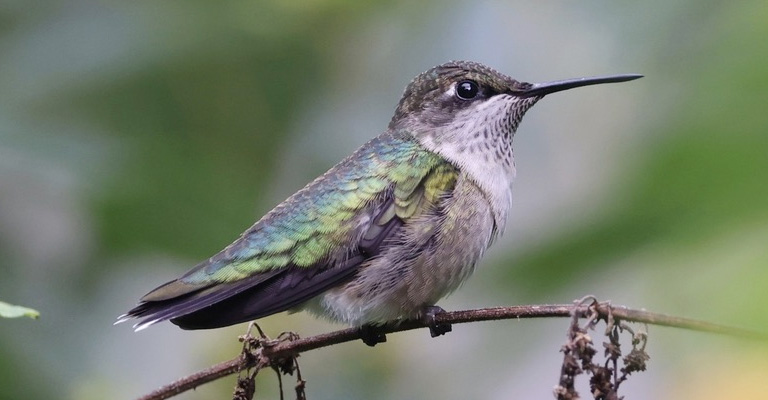Hummingbirds are adorable! Most of us would want them in our homes. But they are too small! You might not have a cage of their size.
Jokes apart, it’s not reasonably possible to have hummingbirds as pets. They are not meant for close areas and the environment of our home. So, can you keep hummingbirds as pets? The answer is, Never.
However, in case this still doesn’t settle your mind, we will more elaborate on why you can never keep hummingbirds as pets, unlike other birds.

About Hummingbirds
Before getting to the point, let’s learn a bit more about this colorful creature of Mother Earth and how they behave.
It is common to our knowledge that hummingbirds are the smallest of all avians. Most species measure 3 to 5 inches (7.5 to 13 centimeters) in length. And when it comes to weight! You will be left surprised. Some of them can only weigh 1.6 grams.
Their feathers are something else! They often feature vibrant colors, including iridescent greens, blues, reds, and purples. It’s not pigmentation. Rather, the variation results from the microscopic structure of their feathers.
They belong to the family Trochilidae and are primarily found in the Americas, with the highest diversity of species in Central and South America.
Besides size, they are also known for their incredible flight abilities. They are the only birds capable of sustained hovering in mid-air by rapidly flapping their wings, typically around 50 to 80 times per second.
The wings create a figure-eight pattern and allow them to move forward, backward, and even upside down.
Natural Habitats of Hummingbirds

As mentioned earlier, hummingbirds are native to the Americas, with the majority of species found in Central and South America.
A few of the species are visible in North America too. They are generally migratory and fly long to feed and breed.
The hummingbirds love the wild. There, they have access to a diverse ecosystem. They feed on a variety of natural food sources and enjoy the freedom to migrate as needed.
Now, let’s come to the point. Can you keep hummingbirds as pets? We already know that it’s not possible.
The possession of any migratory bird is forbidden by the 1918 Migratory Bird Treaty Act. Hence, in the United States, nobody generally can hold these birds in captivity or their babies.
Most countries follow the rules that are best for the wild lives following the US Treaty Act. However, some countries may still not! But don’t worry. Hummingbirds are usually not available in those countries.
However, some organizations do have them with a valid permit to breed and sell them. Most babies are sold to govt. Properties such as zoos and other reservatories have them for national parks.
In short, you can see them but can’t touch them. However, in case you have a hummingbird feeder, you can try it by your window. And if you are lucky, you may be able to tame one like him.
So, how do people with valid limits raise the hummingbirds? Let’s find out in the next section.
So, Why You Shouldn’t Have Hummingbirds as Pets?
A lot of reasons are behind it. Even large birds like Macaws or Perkeets can be raised in households, little Hummingbirds are ideally not fit to be raised indoors. And here’s why,
Can You Ensure Proper Dietry?
Most of us only know of sugar water to offer the hummingbirds. But they need more than that. They have a versatile dietary need that’s quite hard to provide.
As mentioned earlier, they have access to the entire ecosystem and they roam it freely. You may need to develop an entire ecosystem in order to fill their nutrition. And, probably that won’t be enough cause they would need to eat every 10 minutes.
Not Enough Warmup
Every physical body needs some movement to keep healthy. When you bring a bird home, not just hummingbirds, you need to double sure that, they remain healthy both mentally and physically.
Hummingbirds fly around 45 miles per hour. Cages are out of the question! But even if you keep them in a bigger place only made for them (talking about a large greenhouse), it won’t be enough at all.
The higher speed and delicate bodies will easily get them hurt and even killed. Additionally, they belong to the wild. When you captivate them in a close area, this may cause them to stress out and behave irrationally.
What If I Get An Injured Hummingbird?

When you live in Alaska or Tierra del Fuego in South America, it may not be too rare for you to accidentally come by an injured hummingbird.
And if you are also a bird expert, you can generally nurse it back with basic first aid. However, it mostly depends on what types of trauma are you dealing with. Birds in Alaska may often deal with icy weather and may only need some warm-up.
On the contrary, if the situation is otherwise, you may need to seek professional help. The basic steps you can take, indifferent of the situation,
- Clean your hands first and use a cloth or gloves to handle it. Keep the bird in a safe place away from children and other pets.
- Keep the bird warm but not too hot. You can use a heating pad set on low or a warm water bottle.
- Keep the injured hummingbird in a small, well-ventilated container or box. Initially, you can manage it to a clean and contained box.
- Prepare hummingbird nectar (1 cup of sugar with 4 cups of water) and offer the bird. The hummingbird feeder will be best for this situation.
You can initially offer the basic help to the little injured hummingbird. If you notice any improvement, you can either release it or take it to a vet for further inspection.
Do hummingbirds migrate? Well, some hummingbirds do migrate. You can learn more about migration here.
Last Words
Nature is wild and beautiful. It is wise not to tame a part of it and let it be as always. Hummingbirds are small and beautiful creatures and they belong with the green.
We can utmost praise their presence and help them protect their habitat with our human help. To learn how keep an eye on our blogs. We share regular information and tips for your furry friends.
Also, don’t forget to share our article with your friends and let them know what a beauty the hummingbirds are.